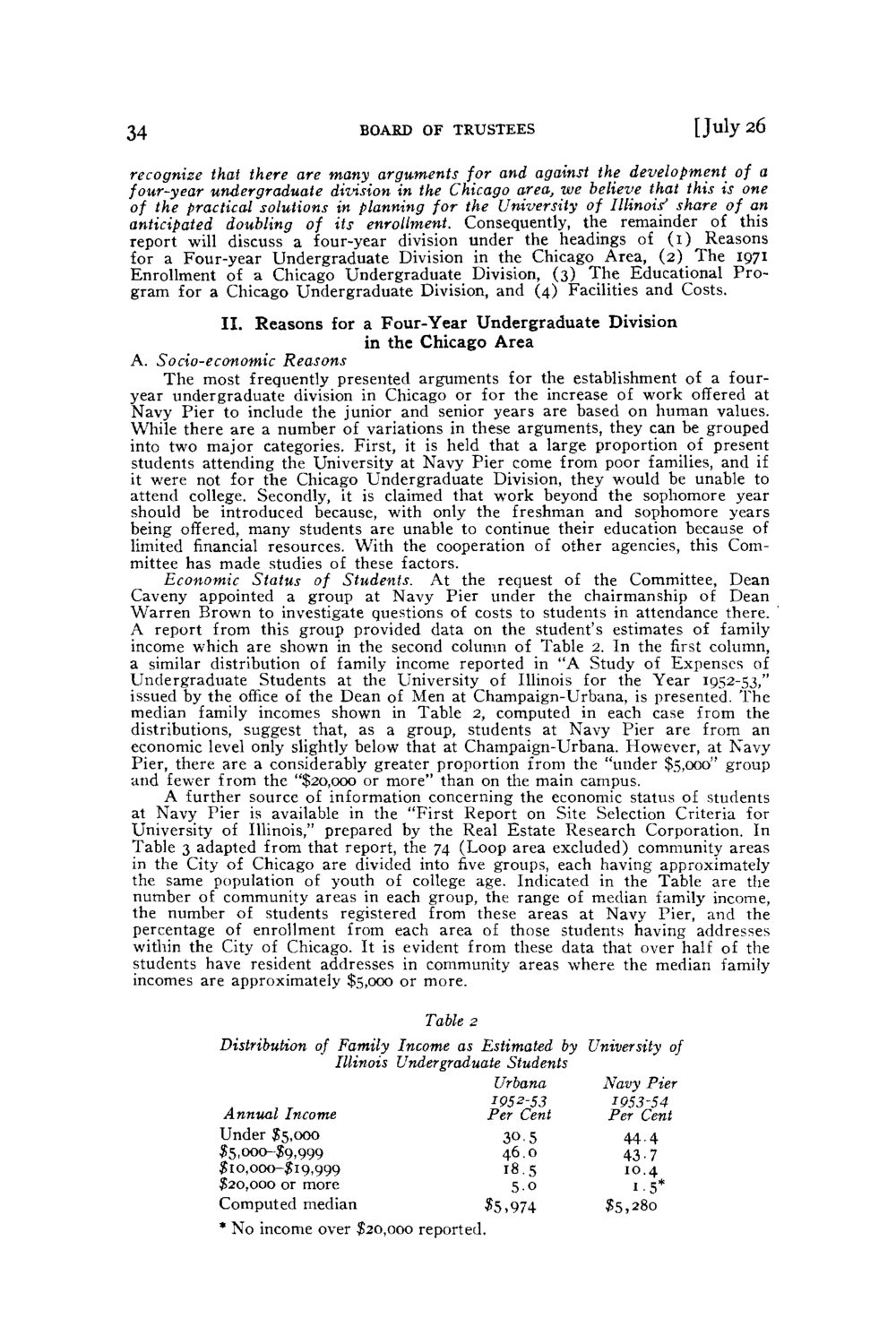| |
| |
Caption: Board of Trustees Minutes - 1956
This is a reduced-resolution page image for fast online browsing.

EXTRACTED TEXT FROM PAGE:
34 BOARD OF TRUSTEES [July 26 recognize that there are many arguments for and against the development of a four-year undergraduate division in the Chicago area, we believe that this is one of the practical solutions in planning for the University of Illinois' share of an anticipated doubling of its enrollment. Consequently, the remainder of this report will discuss a four-year division under the headings of (1) Reasons for a Four-year Undergraduate Division in the Chicago Area, (2) The 1971 Enrollment of a Chicago Undergraduate Division, (3) T h e Educational P r o gram for a Chicago Undergraduate Division, and (4) Facilities and Costs. II. Reasons for a Four-Year Undergraduate Division in the Chicago Area A. Socio-economic Reasons The most frequently presented arguments for the establishment of a fouryear undergraduate division in Chicago or for the increase of work offered at Navy Pier to include the junior and senior years are based on human values. While there are a number of variations in these arguments, they can be grouped into two major categories. First, it is held that a large proportion of present students attending the University at Navy Pier come from poor families, and if it were not for the Chicago Undergraduate Division, they would be unable to attend college. Secondly, it is claimed that work beyond the sophomore year should be introduced because, with only the freshman and sophomore years being offered, many students are unable to continue their education because of limited financial resources. With the cooperation of other agencies, this Committee has made studies of these factors. Economic Status of Students. At the request of the Committee, Dean Caveny appointed a group at Navy Pier under the chairmanship of Dean W a r r e n Brown to investigate questions of costs to students in attendance there. A report from this group provided data on the student's estimates of family income which are shown in the second column of Table 2. In the first column, a similar distribution of family income reported in "A Study of Expenses of Undergraduate Students at the University of Illinois for the Year 1952-53," issued by the office of the Dean of Men at Champaign-Urbana, is presented. The median family incomes shown in Table 2, computed in each case from the distributions, suggest that, as a group, students at Navy Pier are from an economic level only slightly below that at Champaign-Urbana. However, at Navy Pier, there are a considerably greater proportion from the "under $5,000" group and fewer from the "$20,000 or more" than on the main campus. A further source of information concerning the economic status of students at Navy Pier is available in the "First Report on Site Selection Criteria for University of Illinois," prepared by the Real Estate Research Corporation. In Table 3 adapted from that report, the 74 (Loop area excluded) community areas in the City of Chicago are divided into five groups, each having approximately the same population of youth of college age. Indicated in the Table are the number of community areas in each group, the range of median family income, the number of students registered from these areas at Navy Pier, and the percentage of enrollment from each area of those students having addresses within the City of Chicago. It is evident from these data that over half of the students have resident addresses in community areas where the median family incomes are approximately $5,000 or more. Table 2 Distribution of Family Income as Estimated by University of Illinois Undergraduate Students Urbana Navy Pier 1952-53 1953-54 Annual Income Per Cent Per Cent Under $5,000 30.5 44-4 ?5,ooo-?9,999 46.0 43-7 ?IO,OOO-?I9,999 18.5 10.4 ?20,ooo or more 5-0 1-5* Computed median ?5,28o #5,974 * No income over $20,000 reported.
| |